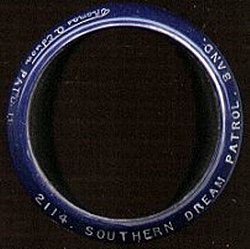Phonograph cylinder
Phonograph cylinders were the earliest commercial method for recording and reproducing sound.
They were commonly known simply as "records" in their era of greatest popularity (c. 1896–1915). They were hollow cylindrical objects with an audio recording engraved on the outside surface. The sound can be reproduced when they are played on a mechanical cylinder phonograph.[1] In the 1910s, the competing disc record system became the more popular commercial audio medium.[2]
Some of the cylinders and their recoreders can be found in local museums.
Phonograph Cylinder Media
Rim of Edison "Blue Amberol" celluloid cylinder with plaster core
Blue Amberol cylinder box lid
Playback demonstration of a recording and playback demonstration at the Thomas Edison National Historical Park in West Orange, New Jersey
References
- ↑ Aodhan Phipps (November 8, 2013). "History of Recorded Music". Transcript of History of Recorded Music. Prezi. Retrieved 2018-01-12.
- ↑ Callie Taintor (May 27, 2004). "Chronology:Technology and the Music Industry". FRONTLINE the way the music died. Public Broadcasting Service. Retrieved 2018-01-12.









